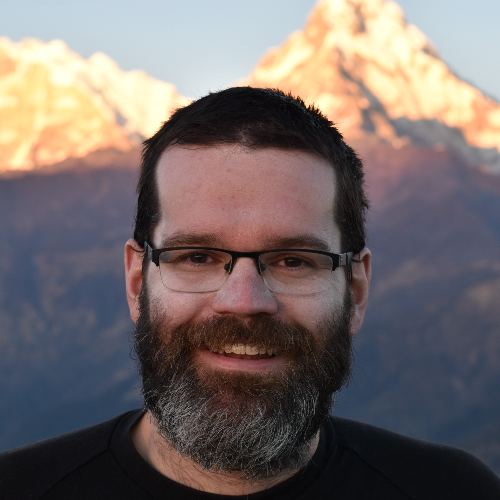Citation
Colin
Gleason is an outstanding hydrologist and one of the world’s leading
researchers working today in the field of remote sensing for fluvial
geomorphology. He is responsible for
multiple groundbreaking findings at the interface of hydrology and
geomorphology across many scales.
Despite only completing his Ph.D. in 2016, Dr. Gleason’s work has already
contributed exciting new lines
of research and deepened our understanding of a number of long-standing debates
in fluvial geomorphology, in particular through his discovery of “at-many-stations
hydraulic geometry,” or AMHG. Classical
hydraulic geometry theory was originally formulated in the 1950s and was
studied extensively in the 1960s, 1970s, and 1980s. Received wisdom was that there was little left to learn, yet as
a Ph.D. student Dr. Gleason spotted a connection that had been missed. Specifically, what Colin uncovered was that the coefficients in hydraulic geometry
theory were closely
correlated in a log
linear manner. In further work, Dr.
Gleason has provided a theoretical explanation for the empirical AMHG result
and shown that it is fully consistent with previous work. Not only is AMHG a major scientific
breakthrough, it has also proved exceptionally powerful and has led to (1) new
methods to estimate river discharge from space that are currently being
implemented operationally in the forthcoming Surface Water and Ocean Topography
(SWOT) satellite mission; (2) new insights into arctic hydrology; and (3)
a fundamental reconsideration of the broad canon of hydraulic geometry theory.
Moreover, Dr. Gleason contributes
substantially to his discipline through various important roles within the
Mission Science Team for the recently launched NASA/CNES SWOT satellite where he coleads
the Discharge Algorithm
Working Group. This team is responsible for producing the operational architecture to estimate discharge
along all global
rivers greater than 50 meters wide (i.e.,
at millions of sites globally). This architecture needs to run in near-real time and ingest many terabytes of data every day to produce
outputs that will be used (and critically evaluated) by many tens
of thousands of scientists globally. Colin’s
leadership has thus resulted in a critical component and backbone of the SWOT mission data system, and in guiding
the development of this over the past decade,
Colin has performed an immeasurable service for this community.
—Paul Bates,
University of Bristol, Bristol, U.K.
Response
This
award means quite a lot to me, and even more so after reading Paul Bates’s
citation written with Larry Smith, Tamlin Pavelsky,
and Dennis Lettenmaier. I admire these hydrologists, and it’s humbling
to read their citation. I am
grateful to Kostas Andreadis for suggesting this honor to that group. I want to
say thank you to each of
these folks, and to my other mentors
in science, Mike Durand, Casey Brown, and Don
DeGroot, for believing
in me and nurturing
my interest in doing perhaps
slightly sideways hydrology. I thank my department for breaking precedent
and hiring its first nonengineering Ph.D. and for trusting
me to start as faculty
6 months after my Ph.D. finished. I thank NASA’s acronym-loving SWOT, HMA, THP, WR, NIP, and AIST programs for their
support alongside the National Science Foundation’s Arctic Natural Sciences (ANS)
program. Finally, I thank my undergraduate program in Forest Engineering (now ERE) at State
University of New York College of Environmental Science and Forestry (SUNY-ESF) for setting my life on a very
different path. They insisted I was capable
of and suited for a career in research, and with no known
examples to follow I would not be writing this response without their strong
push.
It
is disingenuous to keep saying “I” in this response. It is my students, staff,
postdocs, colleagues, and collaborators who
enable everything we do, and
this award is extra meaningful
to us given how we see the hydrologic world. We are an odd mix of fieldwork, fluvial
geomorphology, remote sensing
methods, applied geochemistry, software engineering, machine learning,
and global-scale data science focused exclusively on the satellite era. We
believe that global rivers are, well, rivers. To us, this means vector
entities flowing
daily across complete
network topologies that honor individual river hydrologic, human, and landscape histories for every
river on the planet. En route to this goal, we’ve fashioned a global hydrology
lens with strict definitions of “ungauged basins,” insistence on detail
at-scale, centering of
primary data (in situ and orbital),
methodological agnosticism, and a focus on the hydrology of “what
is.” This approach, together
with our acceptance of low skill,
confuses reviewers who wonder why we didn’t just calibrate a model. I have
therefore frequently wondered whether we’re headed in the right
direction, but this honor
validates our north star as true. It means a lot to us, and I hope to others
like us. Finally, to Binglei:
Rising to match your example every day is the greatest privilege of my life.
—Colin J.
Gleason, Civil and Environmental Engineering, University of Massachusetts
Amherst

